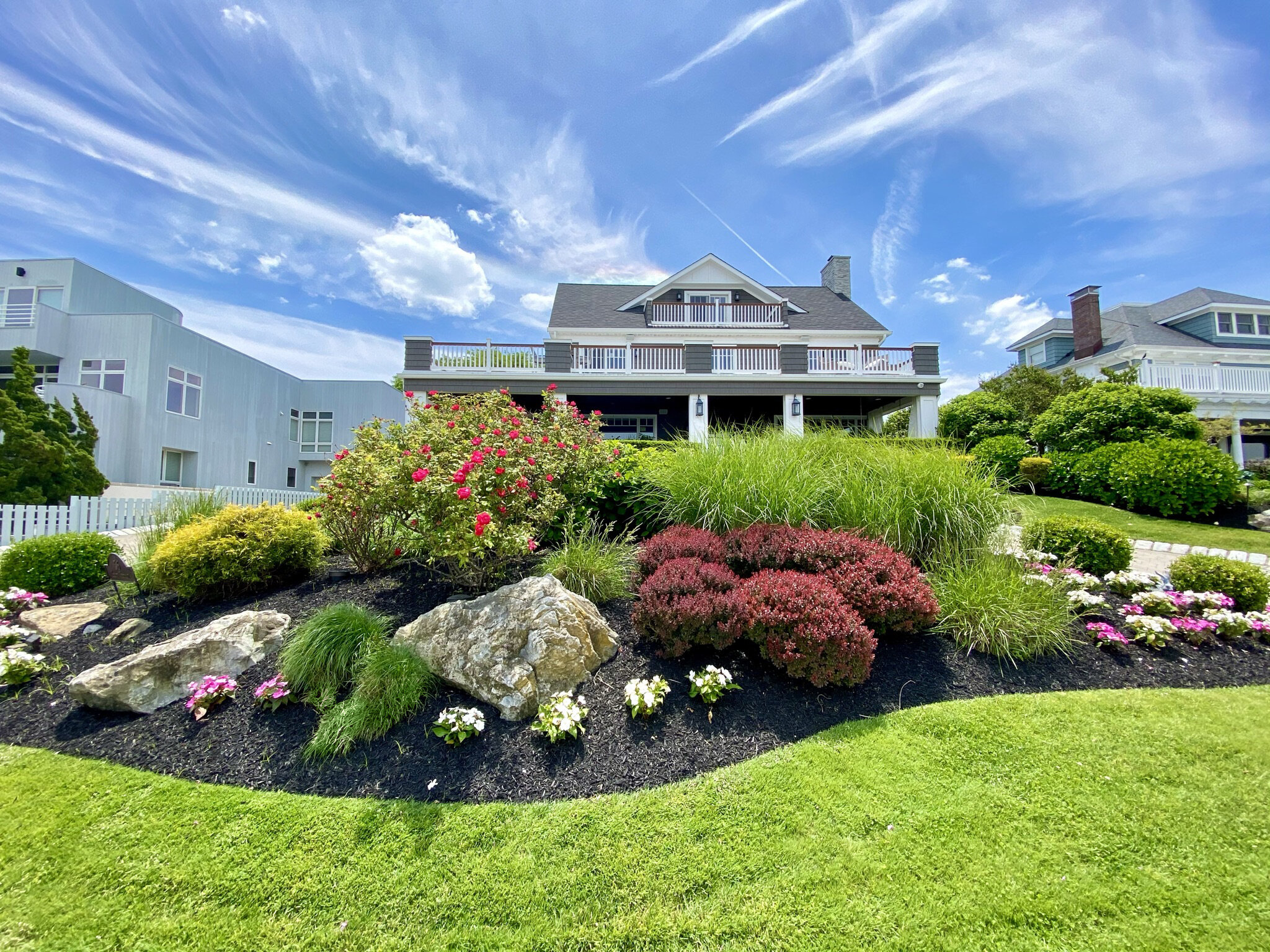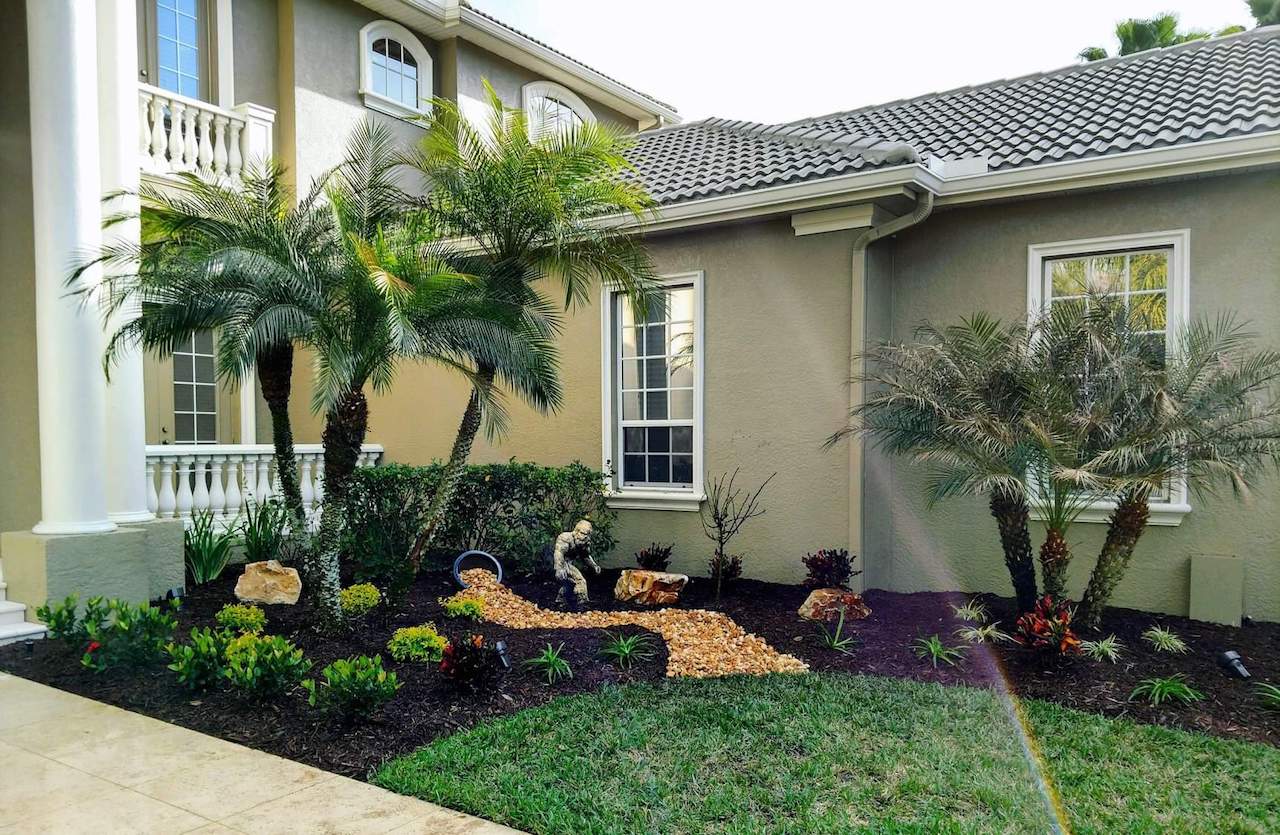Change Your Outside Room with Specialist Palm Desert Landscaping Providers
A Comprehensive Guide to Creating and Implementing Effective Landscape Design Solutions
The art and scientific research of landscape design extend beyond mere visual appeals; they entail a thoughtful combination of design concepts, environmental stewardship, and practical application. What techniques can one use to guarantee these landscapes not just thrive but likewise grow in consistency with their environments?

Recognizing Landscape Layout Concepts
One may wonder what foundational components add to reliable landscape layout. At its core, effective landscape style depends upon a number of key concepts that direct the setup and choice of elements within an area. These principles consist of unity, proportion, rhythm, and equilibrium, each serving to develop a harmonious outside atmosphere.
Unity describes the cohesive connection among different components, making certain that they collaborate visually and functionally. Equilibrium can be accomplished with unbalanced or symmetrical plans, permitting the landscape to feel secure and inviting. Percentage includes understanding the range of elements in connection with each various other and the surrounding setting, promoting visual consistency and comfort.

Examining Your Outdoor Space
Before carrying out the concepts of landscape design, an extensive analysis of your outdoor area is vital. This preliminary assessment aids define the range of your landscape design task and ensures that your design lines up with the special attributes of your property. Begin by examining the dimensions of your area, taking specific measurements to understand the readily available location for numerous elements such as paths, gardens, and patio areas.
Next, observe the existing functions of your landscape, including topography, soil quality, and drain patterns. These variables significantly affect plant option and positioning. Furthermore, evaluate the sunlight exposure throughout various locations throughout the day, as this will impact the sorts of plants that grow in your yard.
Think about the microclimates produced by structures, trees, and various other barriers, as they can impact temperature and moisture degrees. Take note of any type of existing plants or hardscape aspects that you desire to retain or eliminate. This detailed analysis prepares for a knowledgeable and reliable landscape design service, ensuring that your layout is not only cosmetically pleasing however also practical and sustainable for years ahead.
Sustainable Landscape Design Strategies
These practices not just promote eco-friendly equilibrium yet also boost the functional and aesthetic worth of a landscape. Executing reliable watering systems, such as drip watering, minimizes water waste and guarantees that plants receive appropriate wetness (Palm Desert Landscaping).

One more effective strategy is the tactical positioning of shrubs and trees to offer all-natural windbreaks and color, thus lowering energy costs (Palm Desert Landscaping). Rainfall gardens can be incorporated into the landscape layout to handle stormwater runoff successfully, filtering toxins before they enter waterways
Selecting the Right Plant Kingdoms
Selecting the right plants for your landscape is vital to attaining both aesthetic charm and environmental harmony. The process starts with an understanding of your neighborhood climate, soil conditions, and the particular microenvironments within your landscape. Examining elements such as sunshine direct exposure, wetness degrees, and existing flora will certainly help you select plants that thrive in your unique setting.
Think about integrating native plants, as they are well-adapted to regional problems, require much less maintenance, and assistance regional wildlife. Additionally, picking a diverse array of species can enhance biodiversity while reducing the risk of condition and bug episodes. It is vital to review the development habits, growing periods, and seasonal shades of prospective plants to create a vibrant and natural landscape.
Moreover, think of the intended use the area; as an example, if the location will experience high foot traffic, select resilient ground covers. By thoughtfully choosing plants that align with both your aesthetic objectives and environmental demands, you can produce a lasting landscape that not only boosts your home but additional resources likewise contributes favorably to the surrounding ecosystem.

Implementation and Maintenance Methods
As soon as the best plants have been chosen for your landscape, the focus shifts to effective application and ongoing maintenance techniques. Effective installation starts with appropriate website preparation, which consists of soil screening to identify nutrient degrees and pH, complied with by modifying the soil as needed. Thoroughly prepare plants according to their growth behaviors and light needs, ensuring sufficient spacing to promote healthy development.
Watering is an important component of implementation. Establish a watering schedule that considers the details demands of each plant types, readjusting for seasonal changes. Utilizing drip watering systems can enhance water efficiency and minimize runoff.
Upkeep approaches need to be carried out to ensure the durability and vigor of your landscape. Normal jobs include weeding, mulching, and pruning to regulate growth and prevent condition. Fertilizing should be conducted based on soil examinations, giving the needed nutrients without over-fertilizing.
Monitoring for parasites and illness is vital; early discovery can avoid significant damage. Seasonal modifications to maintenance regimens, such as winterizing perennials and preparing for springtime growth, will certainly guarantee that your landscape remains healthy and balanced and visually attractive year-round.
Final Thought
Effective execution and recurring upkeep further ensure the longevity and vitality of landscapes. By integrating these aspects, landscapes can be changed into attractive, functional environments that promote biodiversity and contribute favorably to area health.
One could question what fundamental aspects add to efficient landscape style. At its core, successful landscape style pivots on Clicking Here a number of vital principles that direct the plan and option of aspects within an area.Choosing the right plants for your landscape is important to accomplishing both visual appeal and ecological consistency. It is crucial to review the development routines, growing periods, and seasonal shades of prospective plants to create a dynamic and cohesive landscape.
Once the appropriate plants have actually been selected for your landscape, the focus changes to reliable application and ongoing maintenance techniques.